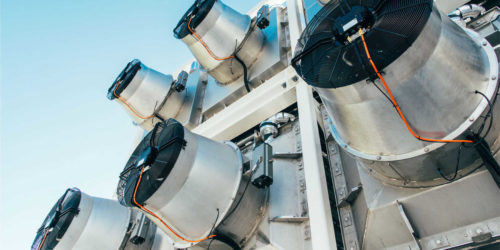
Direct Air Capture and the Climate Long Game
Download our new insight brief, Scoping the Need for Direct Air Capture, here.
According to the latest science, the risk of catastrophic climate change grows significantly if the world warms by more than 1.5°C against its long-term average. Although transforming the global energy system is essential, it may not be sufficient for stabilizing the climate. As a result, carbon dioxide removal (CDR) is increasingly factoring into conversations about how to balance the world’s carbon budget. In fact, most scenarios that keep global warming within the 1.5°C safety zone require the use of natural or engineered CDR techniques to pull excess carbon dioxide from the atmosphere.
At RMI, our primary focus remains mitigating carbon emissions through a rapid energy transition. The best insurance policy is the one that leverages proven, low-cost, and rapidly scalable alternatives to fossil fuels, including efficiency, inexpensive renewable energy, and demand flexibility (shifting energy consumption to times that maximize the use of clean energy and minimize strain on the grid). However, engineered CDR, including nascent solutions like direct air carbon capture and sequestration (DACCS), could provide a critical backstop against worsening climate change and the ability to address emissions already in the atmosphere. DACCS technologies remove carbon dioxide directly from the air and lock it up in underground geologic formations.
What Is the Role for DACCS in a 1.5°C Future?
Emerging interest in DACCS raises important questions for investors, policymakers, and the whole of society about the near-term actions that can help advance these solutions and how to weigh them against other options. Fortunately, there are relatively low-cost opportunities to work through the early learning stages of DACCS now without slowing the energy transition.
In December 2021, RMI’s startup accelerator, Third Derivative (D3), announced First Gigaton Captured, a four-year partnership with the Jeremy and Hannelore Grantham Environmental Trust to find, fund, and scale the most promising carbon removal startups. First Gigaton Captured will focus on specific areas for innovation in direct air capture technology, and qualified startups are encouraged to apply when applications open in March. As part of this work, RMI and D3 are also exploring the potential role and risks of DACCS and other CDR solutions in a climate-aligned future. Our most recent brief on the subject is now available.
Engineered CDR is not a magic bullet that will solve our climate crisis, but such solutions could prove critically important for removing excess emissions in the long term. Having that option, however, requires further developing these technologies alongside efforts to accelerate the shift to a more energy-efficient and low-carbon energy system.
Stay tuned for developments throughout the year, as RMI and D3, in partnership with the Grantham Foundation, share more insights on the wider systems implications of DACCS as we strive toward a 1.5°C future.
Photo courtesy of Climeworks